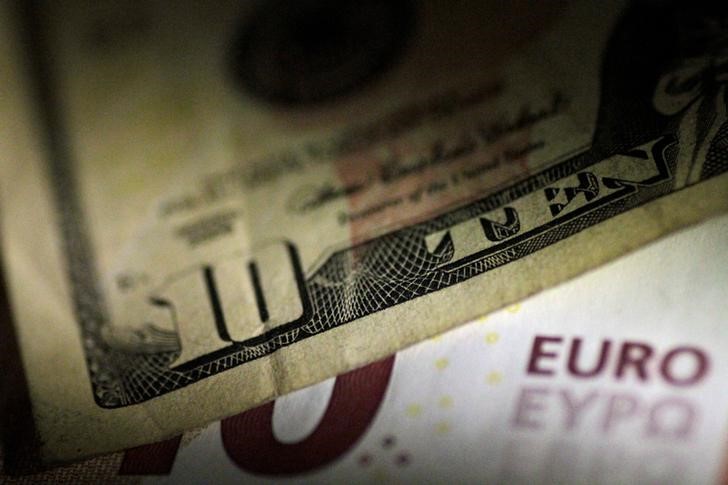Investing.com – The U.S. dollar slipped marginally Friday, while the euro also fell, heading for a sharp weekly loss amid political turmoil in the region.
At 04:20 ET (08:20 GMT), the Dollar Index, which tracks the greenback against a basket of six other currencies, traded 0.1% lower at 105.125.
Dollar edges lower
Despite these small losses, the dollar is on course for small gains this week after the left the funds rate on hold at 5.25%-5.5%, but reduced the number of cuts projected this year to just one, from three in March.
That said, these gains are limited after both U.S. and prices came in weaker than expected, suggesting inflationary pressures were easing, while for unemployment benefits increased to a 10-month high last week.
Despite the Fed’s June dot plot showing a median projection of just one rate cut in 2024, Goldman Sachs continues to expect a first rate cut in September and a second cut in December.
“Our 2024 inflation forecast is now a touch below the FOMC’s, which Chair Powell characterized as ‘fairly conservative.’ With two better rounds of inflation data now in hand, we think that if the next three rounds are in a similar range, the leadership is likely to push through a cut in September,” the U.S. bank added.
Euro weakens on political turmoil
fell 0.3% to 1.0708, on course to register weekly losses of around 0.8% with the European region mired in political turmoil after far-right parties made gains in European Parliament elections, which concluded on Sunday.
French President Emmanuel Macron responded to losses to the right-wing National Front party, led by Marie Le Pen, by calling for a snap election in France.
“It looks like the euro is taking another leg lower in early Europe today on news that the French parties of the Left are getting their act together to form a coalition and only run one candidate per district between them,” said analysts at ING, in a note. “This rare cooperation of the Left stands to suck support from President Macron’s party further.”
in France rose 2.6% year-on-year in May, slightly revising down its preliminary reading of a 2.7% increase published in late May.
EU-harmonised year-on-year in the bloc’s second-biggest economy accelerated in May in comparison to the April reading of 2.4%.
fell 0.2% to 1.2729, heading for small gains this week, after stronger-than-expected inflation data last month in Britain prompted investors to push back their bets on the start date for BoE rate cuts late into 2024.
The May U.K. release is due next week, as is the Bank of England’s next .
Yen weakens after BOJ meeting
In Asia, traded 0.3% higher to 157.56, after the disappointed markets with its plans to tighten policy.
The BOJ kept rates steady and said it will only provide clear signals on its plans to begin reducing its bond purchases at its July meeting, and that it was meeting with market participants in the interim to gain more insight.
gained 0.1% to 7.2557, rising to a near seven-month high, with sentiment towards China battered by the EU imposing steep tariffs on electric vehicle imports from China.


